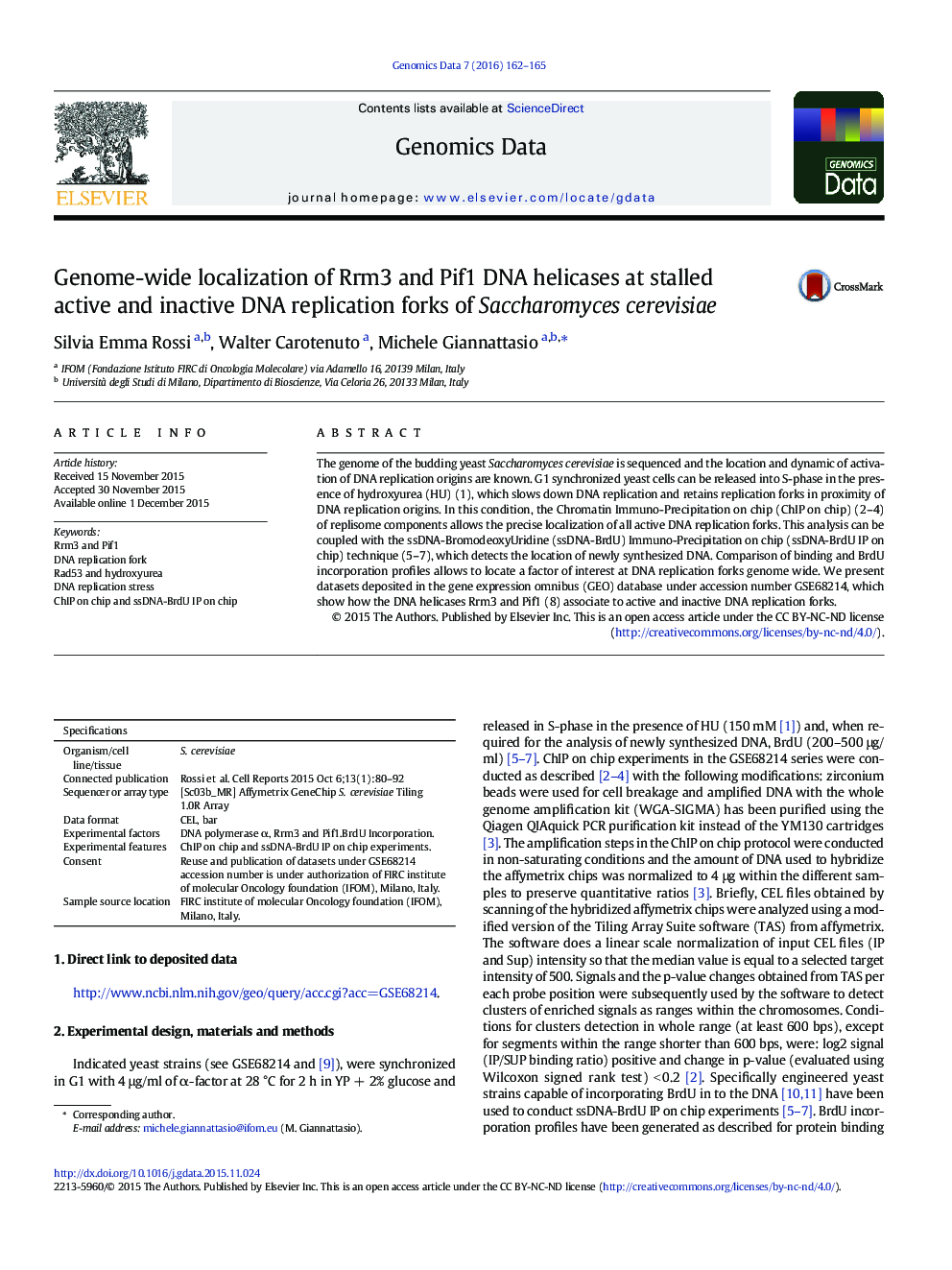| Article ID | Journal | Published Year | Pages | File Type |
|---|---|---|---|---|
| 2822166 | Genomics Data | 2016 | 4 Pages |
The genome of the budding yeast Saccharomyces cerevisiae is sequenced and the location and dynamic of activation of DNA replication origins are known. G1 synchronized yeast cells can be released into S-phase in the presence of hydroxyurea (HU) (1), which slows down DNA replication and retains replication forks in proximity of DNA replication origins. In this condition, the Chromatin Immuno-Precipitation on chip (ChIP on chip) (2–4) of replisome components allows the precise localization of all active DNA replication forks. This analysis can be coupled with the ssDNA-BromodeoxyUridine (ssDNA-BrdU) Immuno-Precipitation on chip (ssDNA-BrdU IP on chip) technique (5–7), which detects the location of newly synthesized DNA. Comparison of binding and BrdU incorporation profiles allows to locate a factor of interest at DNA replication forks genome wide. We present datasets deposited in the gene expression omnibus (GEO) database under accession number GSE68214, which show how the DNA helicases Rrm3 and Pif1 (8) associate to active and inactive DNA replication forks.
